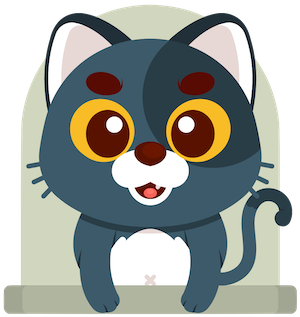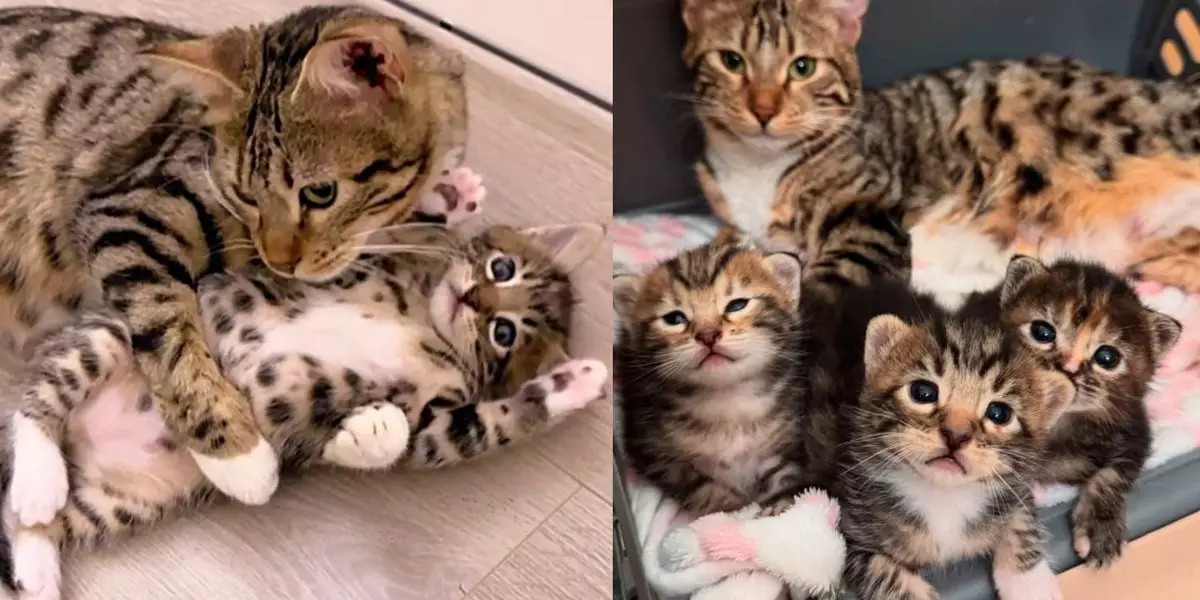The story of Goldie and her adorable offspring exemplifies the profound impact that fostering and adoption can have on vulnerable animals. In a world where stray or abandoned cats often face bleak futures, the chance to form genuine family units in a safe environment underscores the importance of compassionate rescue efforts. Goldie’s journey from a rough outdoor existence to being cherished within a loving home reveals the transformative power of human kindness. It challenges us to reconsider our perceptions of rescue, emphasizing that sometimes, the most compelling stories involve entire families of animals who are best nurtured together, defying the conventional approach of adopting single pets.
What this narrative highlights is that animals, much like humans, crave connection and stability. The establishment of bonds within a foster family isn’t just heartwarming; it is therapeutically vital for the animals’ emotional and physical well-being. Goldie’s intense bond with her kittens punctuates the vital role that stable environments play in rebuilding trust—a trait often shattered by neglect or hardship. Her continued nurturing role demonstrates that fostering isn’t merely about temporary shelter but about creating ecosystems of love where animals can truly thrive. Such stories should compel more prospective adopters and rescue organizations to prioritize Iiving units rather than isolated pets, fostering a mindset where family packs are kept intact whenever possible.
The Commitment Behind the Fostering Process
Fostering is a demanding, often thankless commitment that requires patience, dedication, and genuine compassion. Asa, a volunteer with Kitten Rescue Life, exemplifies these qualities with her unwavering dedication. Her behind-the-scenes effort—feeding, monitoring weight, providing safe spaces—transforms fleeting rescues into lifelong bonds. But beyond the physical care, foster caregivers like Asa serve as advocates, ensuring that animals are seen not just as shelter residents but as individuals deserving of love and respect.
This account sheds light on the emotional labor involved in fostering. Asa’s close interaction with Goldie and her kittens shows an intuitive understanding of their needs, both tangible and emotional. Her willingness to prioritize their well-being over expedience underscores the importance of fostering as an act of love rather than obligation. It’s a reminder that animal rescue requires volunteers to wear many hats—from caregiver to counselor to advocate. The success stories, like Goldie’s, are not solely about the animals’ turnaround but also about the human capacity for patience and resilience.
Inspiring a Culture of Compassion and Long-Term Commitment
The ultimate triumph of Goldie and her babies is more than just a happy ending; it is a call to action for society to embrace long-term commitment and empathy. The decision of a family to adopt all four animals together epitomizes the ideal of unconditional love and understanding. It challenges the misconception that small or fragile animals are better off separated for convenience or easier care. Instead, it demonstrates that animals flourish when their social and emotional needs are prioritized.
This perspective is vital in shaping future rescue endeavors. The notion that animals are most content and secure within their established family units resonates with the way humans forge bonds—through shared experiences, loyalty, and love. Adoption shouldn’t be about individual animals filling gaps in homes but about creating harmonious ecosystems where animals live, play, and heal together. Still, this ideal poses challenges, given the difficulty in finding homes willing to embrace large, bonded groups. However, stories such as Goldie’s serve as powerful evidence that these bonds are worth fighting for, fostering hope that many more animals will find their forever families united.
Breaking Stereotypes and Celebrating Resilience
Goldie’s journey also calls attention to the often-overlooked roles that mother cats and their offspring play in the broader rescue narrative. Too frequently, emphasis is placed solely on kittens or puppies, leaving adult or maternal animals in the shadows. Goldie’s story reminds us that these animals possess incredible resilience, capacity for love, and potential for happiness—if only given the chance.
Her transition from a feral outdoor cat to a devoted mother in a safe home defies stereotypes of animals as untrustworthy or damaged. Instead, it emphasizes that circumstances do not define animals’ capacity to recover and flourish. The vibrancy of her kittens and the thriving bond she shares with them serve not only as a testament to her strength but also as an inspiration for rescuers and adopters alike. It pushes us to challenge our biases and see every rescue as an opportunity to celebrate resilience, hope, and new beginnings.
Beyond the immediate impact, stories like Goldie’s cultivate a culture that values compassion over convenience. They inspire society to view rescue work as an ongoing act of devotion, emphasizing the importance of keeping families together and respecting animals as sentient beings with complex emotional needs. Goldie and her children are not just animals in need—they are symbols of hope, illustrating that with patience and love, even the most battered lives can be rewritten into stories of joy and connection.


Leave a Reply